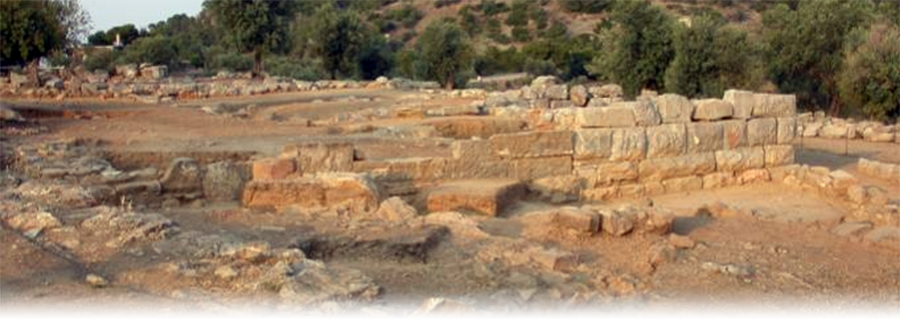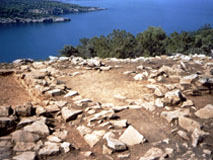|
PREHISTORICAL PERIOD ...

...The island of Poros, otherwise known as Kalavria, along with the entire southeastern part of the Peloponnese, was inhabited for the first time during prehistoric times.
Throughout that era, the historical years and beyond, Sferia was unoccupied. The only thing that was there was the Temple of Apatouria which was dedicated to goddess Athena.
In the early Hellenic years, the residential area of Kalavria seems quite populated because there is evidence that three settlements existed during this time period. One village replacing the sanctuary of Poseidon’s Temple, another in the area which eventually became the town of Kalavria, near the sanctuary and a third one westward, on the mountain slope of Prophet Elijah located further up from the plain of Foussa.
The origin of these residents is basically unknown, but it seems that a couple of them had Egyptian roots just like the first inhabitants of Trizina and all of Argonafplia.
While these pre-Hellenic tribes seem to derive from Egypt, the descent of other tribes later on, such as the Ionians and Dorians, almost completely altered the entire original race but preserved many of their old local traditions.
Chronologically, the area first welcomed Ionian residents, who eventually prevailed and Trizina and Kalavria turned into Ionian cities and had special relations with the inhabitants of Attica and Viotia during that time. This is evident from the worship of Athena of Apatouria since it is typically Ionian. With the descent of the Dorians, Trizina accepted Dorian settlers from Argos, most likely in a peaceful manner.
Recently, the discovery of an extended territory (approximately 20 acres) from the early Hellenic period (3rd millenium B.C.), offered us valuable information about prehistoric times.
 Specifically, an ancient village of Poros from the early Bronze Age was revealed, at the location of Cape Vasili which is on the northeastern side of the island. This is the oldest settlement ever discovered in Trizina til today. Two well-preserved buildings with large rooms and storage areas came to light. Specifically, an ancient village of Poros from the early Bronze Age was revealed, at the location of Cape Vasili which is on the northeastern side of the island. This is the oldest settlement ever discovered in Trizina til today. Two well-preserved buildings with large rooms and storage areas came to light.
This settlement is probably associated with the shipwreck that was found a few years ago on the island of Dokos and dated from the same period.
A significant nautical residential area was also observed on the islet of Modi, east of Poros, dated from the last stage of the Mycenaean era (13th century B.C.). The findings indicate that their residents had some type of commercial transactions with other Aegean regions. |
























